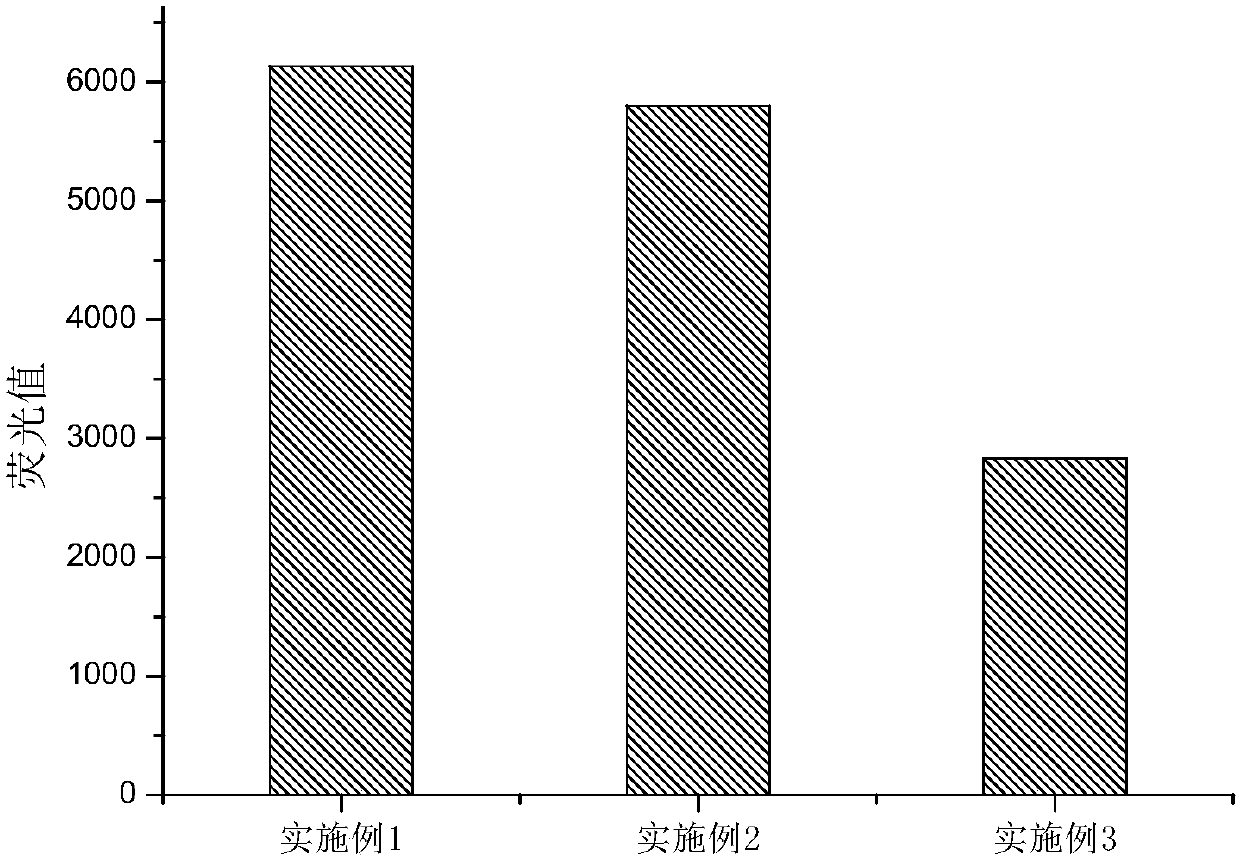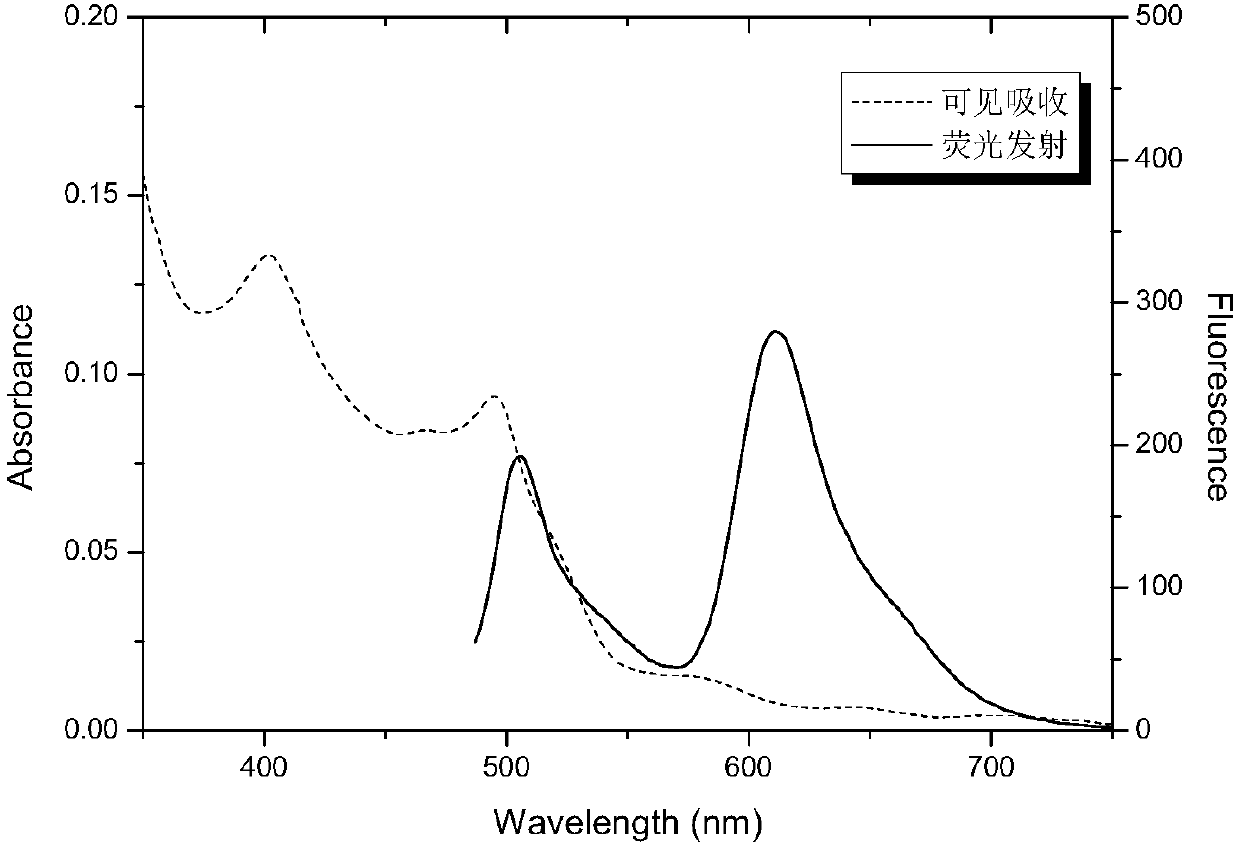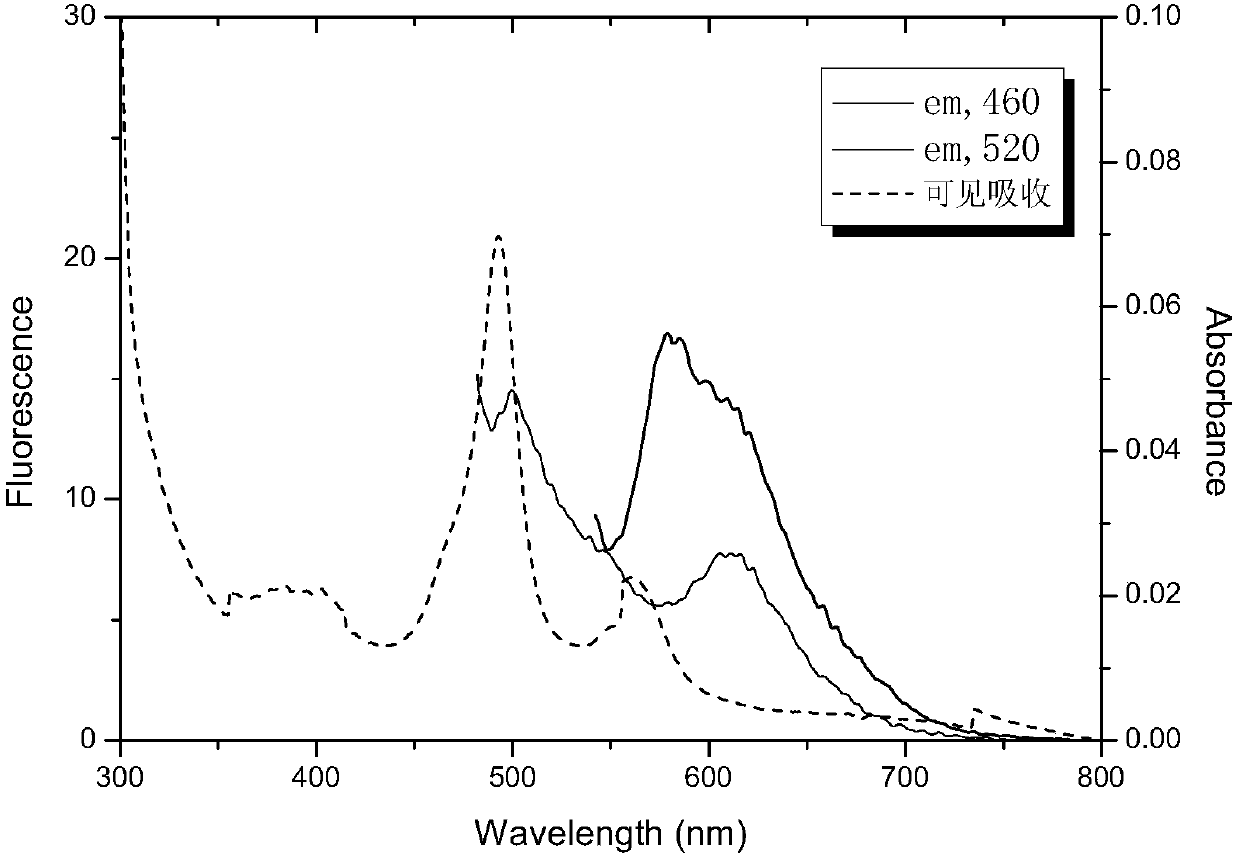Method for preparing cyanobacterial phytochrome fluorescent marker with orange-red fluorescence
A technology of phytochrome and cyanobacteria, which is applied in the direction of bacterial peptides, chemical instruments and methods, and peptides containing affinity tags, etc., can solve the problems of unstable expression and difficulty in obtaining qualified products with stable quality, so as to increase production, Effects of improving strain stability and screening efficiency, and reducing the number of genes
- Summary
- Abstract
- Description
- Claims
- Application Information
AI Technical Summary
Problems solved by technology
Method used
Image
Examples
Embodiment 1
[0033] Sequence Selection of Cyanobacterial Phytochrome GAF Domain
[0034] The cyanobacterial phytochrome gene sequence alr5272 (algal species PCC7120) has two GAF domains with high homology. The GAF domain gene sequence selected in this program is the first domain gene sequence, which is hereinafter referred to as the gaf gene sequence. The amino acid sequence of the expressed protein is as follows:
[0035] ESLDLETILYQTAKDLRQCLKCDRILIYQIKSDNNGAIVAESTILPNVSLLGKHFRDPCFTGKYKERQGRCCLEIIEDIYAAGVKPCQRDFLASMQVRANIVVPIALKSDLWGLLIAQYCDEPHQWQQIEIDLLKQLATQLGIAIQNTK (SEQ ID NO: 1).
[0036] Selection of transgenic plasmid combinations
[0037] This protocol uses the Duet series double plasmid combination, the sa::gaf fusion gene is inserted into the multiple cloning site 1 of pET Duet; the phycoerythrin synthase plasmid uses pACYC Duet-ho1-pebS.
[0038] The fusion design of streptavidin sa sequence, gaf sequence and 6his-taq affinity tag sequence was carried out, and the gene seque...
Embodiment 2
[0073] Get the monoclonal bacterial classification that the fermentation of embodiment 1 uses, carry out fermentation as follows.
[0074] 1) Preparation of primary seed solution: Take 20 μL of qualified monoclonal bacterial seed solution, insert it into 25 mL of LB medium, shake overnight at 37°C to a saturated concentration;
[0075] 2) Prepare the secondary seed solution: transfer 5mL of the primary seed solution into 1.5L LB medium, culture with medium-speed shaking at 37°C for 3-4h, OD 600 Control below 0.5;
[0076] 3) Inoculation: transfer 1.5L secondary seed solution to a 200L fermenter, medium 150L, fermentation medium formula: peptone 1%, yeast powder 0.5%, sodium chloride 1%, glycerin 0.4%, blood red 0.004% element, the pH value was adjusted to 7.2 with NaOH solution;
[0077] 4) Cultivation: 37°C, 300rpm medium speed cultivation to the early growth stage, the duration is about 1h;
[0078] 5) Cool down: set the tank temperature to 20°C, reduce the rotation spe...
Embodiment 3
[0082] Get the monoclonal bacterial classification that the fermentation of embodiment 1 uses, carry out fermentation as follows.
[0083] 1) Preparation of primary seed solution: Take 20 μL of qualified monoclonal bacterial seed solution, insert it into 25 mL of LB medium, shake overnight at 37°C to a saturated concentration;
[0084] 2) Prepare the secondary seed solution: transfer 5mL of the primary seed solution into 1.5L LB medium, culture with medium-speed shaking at 37°C for 3-4h, OD 600 Control below 0.5;
[0085] 3) Inoculation: transfer 1.5L of secondary seed solution to a 200L fermenter, 150L of culture medium, fermentation medium formula: 1% peptone, 0.5% yeast powder, 1% sodium chloride, 0.4% glycerin, pH value NaOH solution adjusted to 7.2;
[0086] 4) Cultivation: 37°C, 300rpm medium speed cultivation to the early growth stage, the duration is about 1h;
[0087] 5) Cool down: set the tank temperature to 20°C, reduce the rotation speed to 150rpm, and culture a...
PUM
 Login to View More
Login to View More Abstract
Description
Claims
Application Information
 Login to View More
Login to View More - R&D
- Intellectual Property
- Life Sciences
- Materials
- Tech Scout
- Unparalleled Data Quality
- Higher Quality Content
- 60% Fewer Hallucinations
Browse by: Latest US Patents, China's latest patents, Technical Efficacy Thesaurus, Application Domain, Technology Topic, Popular Technical Reports.
© 2025 PatSnap. All rights reserved.Legal|Privacy policy|Modern Slavery Act Transparency Statement|Sitemap|About US| Contact US: help@patsnap.com



